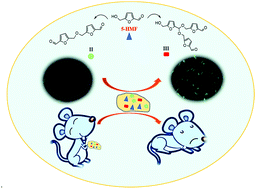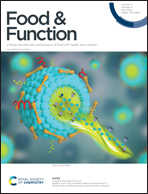Potential neurotoxicity of 5-hydroxymethylfurfural and its oligomers: widespread substances in carbohydrate-containing foods†
Abstract
5-Hydroxymethylfurfural (5-HMF) is present in numerous carbohydrate-containing consumer products and is readily converted into two oligomers (II and III) by acid-catalyzed transformations. Previous studies have demonstrated various undesirable effects of 5-HMF at relatively high concentrations. In this study, we demonstrate that 5-HMF and its two oligomers exert neurotoxic effects in vivo and in vitro. All three substances blocked the proliferation of PC12 and HT22 cells at the S or G2-M phase in dose- and time-dependent manners. In addition, [Ca2+]i and reactive oxygen species levels were both significantly increased by treatment with these substances at 100 μM, individually, compared with the control group. Although no motor and cognitive deficits are observed, 5-HMF and III can induce anxiety- and depression-like behavior in adolescent mice at administered doses of 0.15 mg kg−1 and 1.5 mg kg−1in vivo, which are close to or less than the reported 24 h dietary intake of 5-HMF in humans. Together, our findings suggest the need for close monitoring of the content of these substances in food, as well as the need for studies on the effects of long-term exposure to them.



 Please wait while we load your content...
Please wait while we load your content...